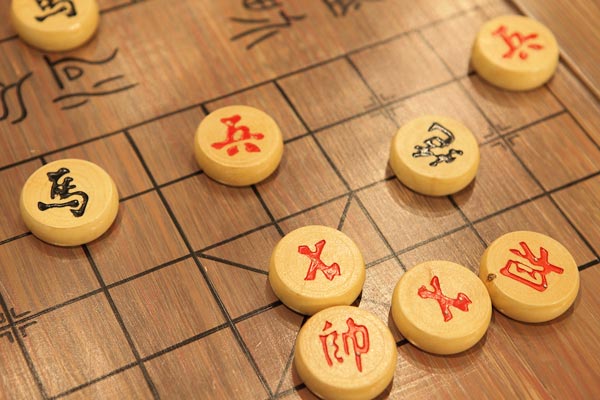Shadow Puppets is an ancient traditional Chinese folk art. Old Beijingers call it "donkey skin shadow play". According to historical records, Shadow Puppets originated in the Western Han Dynasty, flourished in the Tang Dynasty, prospered in the Qing Dynasty, and spread to West Asia and Europe during the Yuan Dynasty. It can be said that it has a long history.

Shadow Puppets, also known as "shadow play" or "lantern shadow play", is a folk drama that uses silhouettes of characters made of animal skin or cardboard to perform stories. During the performance, the artists manipulate the shadow figures behind the white curtain while telling the story with local popular tunes, accompanied by percussion instruments and string music, with a strong local flavor. Its popularity is extremely wide, and a variety of Shadow Puppets are formed due to the different vocal styles performed in different places.
Performance form
Shadow Puppets, formerly known as "shadow play" or "lantern shadow play", is a folk drama that uses candles or burning alcohol to illuminate silhouettes of characters made of animal skins or cardboard to perform stories. During the performance, the artists manipulate the characters behind a white curtain while singing the story in local popular tunes (sometimes in dialect), accompanied by percussion instruments and string music, which has a strong local flavor. In rural areas of Henan, Shanxi, Shaanxi, Tianshui, Gansu and other places, this simple Han folk art form is very popular.
"Shadow puppet" is a general name for Shadow Puppets and Shadow Puppets characters (including scene props and scenery) products. Shadow Puppets is a drama form that allows the audience to watch the shadow of a flat puppet performance through a white curtain to achieve artistic effects; the flat puppets and scene scenery in Shadow Puppets are usually leather products made by folk artists by hand, knife carving and painting, so they are called shadow puppets. In the past, when there were no movies or television, Shadow Puppets was one of the most popular folk entertainment activities.

Historical Origin
Shadow Puppets has a history of more than 2,000 years since written records began. Emperor Wu of Han's beloved concubine, Lady Li, died of illness. Emperor Wu missed her so much that he was in a trance and ignored state affairs all day. Minister Li Shaoweng went out one day and met a child playing with a doll, whose shadow was reflected on the ground and looked lifelike.
Li Shaoweng had an idea and cut Lady Li's image out of cotton, painted it with colors, and installed wooden poles at the hands and feet. At night, he surrounded the square curtain, lit candles, and respectfully invited the emperor to sit in the tent to watch. Emperor Wu was very pleased after watching the doll and couldn't let it go. This love story recorded in the "Book of Han" is considered to be the earliest origin of Shadow Puppets.
Since the Yuan Dynasty in the 13th century, along with military expeditions and land and sea exchanges, Chinese shadow puppet art has been introduced to Persia (Iran), Arabia, Turkey, Siam (Thailand), Myanmar, the Malay Archipelago, Japan, and Asian and European countries such as Britain, France, Germany, Italy, and Russia.

Shadow puppet making
Shadow puppet making is a unique art form that cleverly combines Chinese folk arts and crafts with opera art. It requires the maker to have a solid foundation in painting and superb carving skills. The finished product can be used for performances, decorations or collections. The shape is simple and elegant, with a strong national flavor.
1. Material selection and pretreatment
- Skin selection: Donkey skin or yellow cowhide are mostly used. Changli shadow puppets are mainly made of donkey skin (even thickness and bright colors), while Huazhou shadow puppets prefer the first layer of yellow cowhide of 2-3 year old bulls.
- Skin scraping: Remove hair grease to make the leather translucent. Experience is required to judge the humidity.

2. Carving and decoration
- Drawing: Outline the characters of opera (sheng, dan, jing, mo, chou) or myths and legends.
- Carving: Using the "pushing skin and moving knife" technique, it takes more than 3,000 knives to carve, and the order is "carve the head hat first, then the face, and finally pick out the nose tip and face".
- Coloring: Use transparent watercolor to color, Huazhou shadow puppets emphasize bright contrast, and Changli shadow puppets are brushed with clear oil to fix the color.
3. Assembly and shaping
- Stitching: Use thin cowhide strips to connect the joints to ensure smooth movements.
- Pole installation: Use iron wire to fix the active parts, and insert arrow poles (sorghum poles) or bamboo sticks at the end for easy manipulation.

Cultural value and inheritance
Shadow Puppets is known as the "master of film and the ancestor of opera". Its production skills carry a thousand-year history and have spread to West Asia and Europe in the Yuan Dynasty. Contemporary inheritance faces the impact of mechanization, but Changli, Huazhou and other places still retain the essence of traditional handwork and become a regional cultural symbol.




